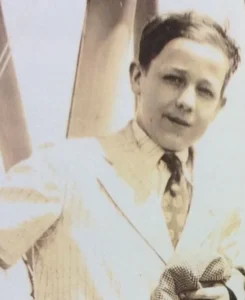Electrogravitics: At a Glance
Electrogravitics, once dismissed as fringe science, is reemerging in conversations about future propulsion. This blog traces its origins to the 1920s, when a young Townsend Brown observed unexplained motion from asymmetric capacitors using a Coolidge X-ray machine. With encouragement from Dr. Paul Biefeld, Brown documented what became known as the Biefeld-Brown Effect, suggesting a link between electricity and gravity. Despite skepticism, this early research may hold the key to silent, fuel-free propulsion. As interest grows among engineers and innovators, electrogravitics is no longer just a curiosity. It’s a field ready for rediscovery and modern exploration.
Read time: 5.5 minutes
Introduction: Electrogravitics and Propulsion
From military disclosures to YouTube debates, the term electrogravitics is circulating more than ever. Scientists, journalists, and engineers are asking: Could this once-dismissed field called electrogravitics, offer clues to propulsion systems beyond rockets and jet fuel?
To answer that, we have to return to the 1920s, a salvaged X-ray machine, and a discovery that made capacitors move, which made capacitors move. Townsend Brown didn’t just observe a phenomenon; he may have uncovered the beginning of a whole new field: energy in motion. What if the key to silent, fuel-free propulsion was discovered in the 1920s and ignored for nearly a century?
Where It All Began: Electrogravitics
The word electrogravitics was first introduced in British Patent No. 300,311, filed by Thomas Townsend Brown. Working with Dr. Paul Biefeld at Denison University, Brown experimented with asymmetric capacitors under high-voltage conditions and observed physical motion in the devices. This phenomenon, now known as the Biefeld-Brown Effect, defied conventional electrical theory and suggested a relationship between electric fields and gravity. This early use of the term set the foundation for today’s growing discussions about electrogravitics as a serious field of study.
Key Terms:
Biefeld-Brown Effect: The observed propulsion-like motion resulting from high voltage applied to asymmetric capacitors.
Asymmetric Capacitor: A capacitor with electrodes of unequal size, used to create a directional electric field.

Electrogravitics: A theoretical field exploring the interaction between electricity and gravity.
The Experiments That Moved; Electrogravitics in Action
A Curious Young Mind
Townsend Brown was born in 1905 in Zanesville, Ohio. With a love for science fiction and access to tools beyond his years, he began experimenting with an old Coolidge X-ray machine. While exploring its function, he noticed something strange. There was movement. After tracing the cause, he found it wasn’t from mechanical vibration or magnetic influence but from the capacitor itself, a discovery that would later be recognized as central to electrogravitics.
First Public Demonstration
In 1922, Brown demonstrated this phenomenon at a local science contest, winning recognition that would later fade as his ideas ran up against conventional academia. He later enrolled at Caltech, where physicist Robert Millikan told him his ideas about gravity were “impossible.” Disheartened, Brown left and continued his work independently.
The Biefeld Connection
At Denison University, Brown partnered with Dr. Paul Biefeld, who encouraged deeper research. It was here that Brown refined his work on asymmetric capacitors, setting the stage for what we now call electrogravitics.
The Bigger Possibility
Brown’s early experiments sparked decades of curiosity but also skepticism. Today, the Biefeld-Brown Effect remains a debated phenomenon within the broader field of electrogravitics. Is it simply ion wind? Or is it an early glimpse into electrogravitics, propulsion systems that don’t rely on combustion?
If there is indeed a deeper interaction between high-voltage electrostatic fields and gravity, or inertia, then we’re looking at more than just academic interest. We’re looking at the foundation for silent, fuel-free propulsion.
If you’re an engineer, researcher, or curious innovator, Brown’s journey isn’t just a story; it’s a possible blueprint. What could we build if we picked up where he left off?
“The reasonable man adapts himself to the world; the unreasonable one persists in trying to adapt the world to himself. Therefore, all progress depends on the unreasonable man.”
— George Bernard Shaw
Electrogravitics – What We Know
Townsend Brown’s discoveries were not just early curiosities. They were foundational glimpses into a field that challenges our understanding of motion, energy, and gravity. Electrogravitics, born from a teenager’s experiment with an X-ray machine, remains one of the most intriguing possibilities in propulsion science, and interest in electrogravitics continues to expand as new generations of researchers revisit Brown’s work. Today, with advancements in materials, computing, and experimental design, we’re better equipped than ever to revisit his work.
What aspect of electrogravitics fascinates you most, and where does your curiosity suggest this road might lead?
Let’s Talk Discovery
If you’re navigating similar territory, tinkering with high-voltage setups, chasing the edge of known science, or revisiting theories others set aside long ago, you don’t have to do it in isolation.
I work with researchers and science enthusiasts who are serious about refining their work and thinking through the challenges that come with charting new ground. Sometimes that means revisiting fundamentals. Sometimes it means asking better questions together.
📩 If you’re looking for a mentor or simply someone who understands the long arc of curiosity, I’d be honored to connect. You can connect with me on Linkedin, schedule a conversation or shoot me an email at 👉 letstalk@larrydeavenport.com.
Breakthroughs don’t always happen in the lab. Sometimes, they begin with a shared conversation.
About the Author

Larry Deavenport is a researcher, speaker, and educator with more than 40 years of experience exploring the frontier of electrokinetics, which he calls energy in motion. As founder of Deavenport Technology, he is dedicated to equipping innovators, researchers, and engineers with the clarity, tools, and mentorship they need to transform scattered theories into working prototypes.
Larry’s work focuses on bridging the gap between curiosity-driven experimentation and practical application. His teaching combines structured principles, hands-on demonstrations, and one-on-one guidance to help learners refine breakthroughs and accelerate discoveries. Through his keynotes, workshops, mentoring programs, and his two signature master courses, Larry inspires a new generation of pioneers to explore advanced gravitics and motion-based energy systems that align with natural forces and reduce environmental impact.
Passionate about both discovery and education, Larry continues to share his research and insights at conferences, in collaborative forums, and through his growing platform at Deavenport Technology. His mission is to guide bold thinkers who are ready to move from possibility into progress, shaping the future of sustainable energy and redefining what is possible.
References
- Brown, T. T. (1928). British Patent No. 300,311 – Method of and Apparatus for Producing Force or Motion. [Available through UK Intellectual Property Office archives]
- Valone, Thomas. (2000). Electrogravitics Systems: Reports on a New Propulsion Methodology. Integrity Research Institute. https://www.integrityresearchinstitute.org
- APEC (Alternative Propulsion Engineering Conference). Experimental validation videos and discussions of the Biefeld-Brown Effect in vacuum by Mark Sokol and Andrew Aurigema. https://www.altpropulsion.com
- NASA Technical Memorandum 107166. (1992). “An Overview of Experimental Concepts for Electric Propulsion” https://ntrs.nasa.gov
- Hathaway, George D. (1991). Electrogravitic and Electrokinetic Propulsion. Electric Spacecraft Journal, Issue #8–10. Hathaway, George D. (1991). Electrogravitic and Electrokinetic Propulsion. Electric Spacecraft Journal, Issue #8–10.
- LaViolette, Paul A. (2008). Secrets of Antigravity Propulsion: Tesla, UFOs, and Classified Aerospace Technology. Bear & Company. (Caution: speculative content, but widely referenced in the electrogravitics community)



